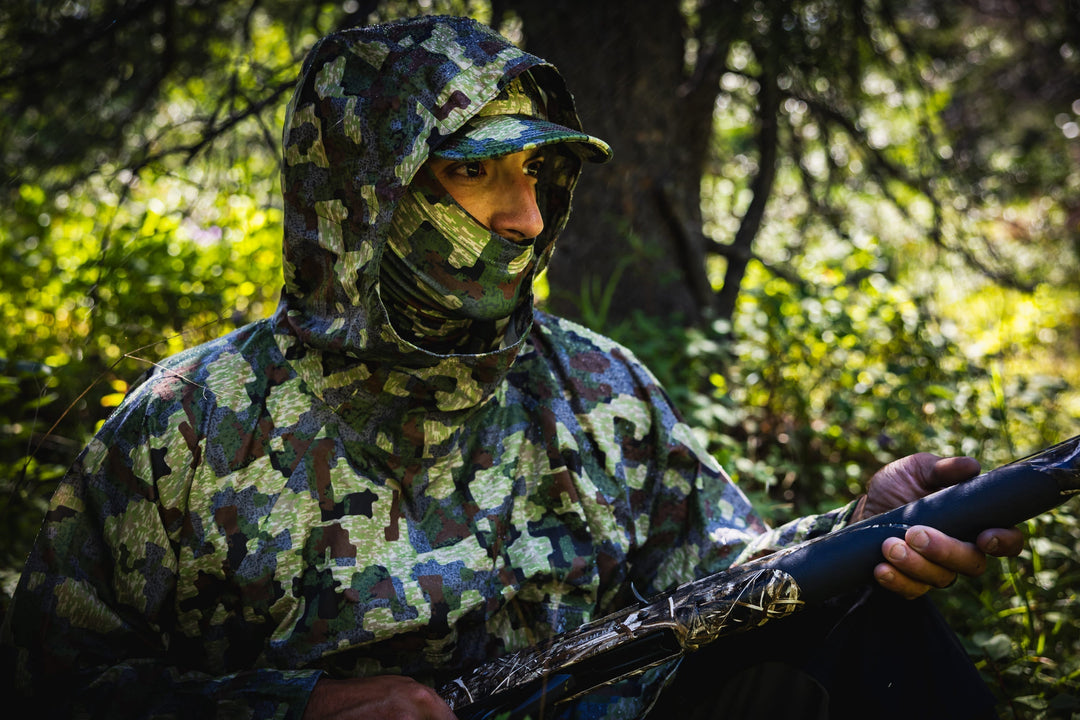Why You Need A Clothes Layering System For Hunting
Learning how to layer and maximize each piece of gear’s ability to keep you warm is a hunting knowledge fundamental. There is a simple truth in hunting: stay comfortable, stay hunting.
The hunters of generations past would don thick and heavy wool, a decidedly uncomfortable kit when you factor in weight and lack of maneuverability. Today’s technical clothing and modern fabrics have given hunters options that make them more nimble without sacrificing thermal qualities.
|
Table of Contents: |
What Is The Best Way To Layer Hunting Clothes?
Layering clothes works by using multiple pieces that are thinner rather than wearing one larger and bulkier item. Each layer can be adjusted or removed depending on the wearer’s activity and thermal needs. This allows hunters to fine tune what gear they need to stay comfortable.
The basics of the Tri-Layer system are base layers followed by insulation layers, and then an outer layer or protection shell. Each component is personalized for the wearer's environment, activity, and personal needs. Once you have figured out your own clothing layering system, nearly all of your hunting will be covered with just 4-5 pieces.
What Is The Best Base Layer For Hunting?

Featured Items: Women's Deep Space Long Sleeve Base Layer Shirt
Layering systems start with a base layer. This layer fits close to the body with the primary purpose of wicking sweat away from the skin. Sweat becomes dangerous when it cools the body beyond what it can reheat in cold environments (think hypothermia). Preventing sweat before it begins is best, but that’s hard to do during high-intensity activity. Base layers work to keep that sweat from cooling the body by bringing it to the surface where it can evaporate away from the skin.
The two most popular options for hunting base layers for cold climates are merino wool and synthetic. Each has their own benefits and tradeoffs. Merino is renowned for its warm-when-wet property and for minimizing odor. It also tends to be softer. Synthetics dry faster than merino and are more durable. They are also less expensive, but can melt if they come too close to a heat source.
Start with a lighter base layer and bulk up only when you know you will be in extreme cold or sedentary. Forloh uses Trizar, originally developed by NASA, in the Deep Space base layer to redirect heat without adding bulk. When choosing your base layer, material is key. Avoid cotton because it absorbs water and has little thermal value.
What Is The Best Mid Layer For Hunting?

Featured Items: Men's ThermoNeutral Down Jacket
The insulation mid layer traps body heat and prevents heat loss to keep you warm in cold weather. When hunting, this layer is usually kept in a pack and retrieved after cooling down. If your mid layer is too heavy, sweat will build up rapidly. If it is too light, your body won’t be able to keep up with the elements to stay warm.
Hunters that run hot might opt to eliminate this layer altogether, but having it close by can be lifesaving in an emergency situation. Doubling up on insulation layers can add bulk and reduce their insulative power. Instead, down jackets and vests, often called “puffers,” can add that needed warmth. I never wear mine while moving; I’ll overheat before I take 10 steps. But while sitting and glassing, they are the next best thing to having a roaring fire.
How To Choose The Right Outer Layer For Hunting

The outer layer is your shell. Here you want something durable that can defend you against the elements. You need an outer layer and hunting jacket that will protect you against wind and rain while withstanding your moves through dark and dense timber. Forloh’s AllClima jackets and outdoor pants offer windproof and waterproof protection. Vents that can be zipped open after a quick climb and then closed once you’ve cooled down eliminate the hassle of dropping and adding layers after movement.
Hunting layering systems tend to focus on the core and legs—but don’t forget your head, hands, and feet. Neck gaiters prevent cool wind from sneaking down your back. Headgear, like FORLOH’s Softshell Beanie, should be comfortable but not tight and if possible, windproof. Lightweight gloves keep wind off your hands while retaining dexterity. A special note on socks: bulking up for insulation can also affect your boots’ fit and comfort; try them out first before going afield.
More Hunting Layering System Tips

Featured Items: Women's Deep Space Base Layer, Women’s AllClima Stretch Woven Pants, Women’s AllClima Soft Shell Jacket, Puff Embroidered Mesh Hat
- Tuck your base layer top into your base layer pants to keep from exposing your lower back.
- Change your socks when you break for lunch; almost nothing beats the feeling of fresh socks.
- Refine your hunting gear choices after each trip.
- Stay clean. Dirty fabrics do not perform as well; dirty skin can get infected; and dirty hunters are easily smelled by animals. Learn how to wash your hunting clothes.
- Keep more layers with you than you’ll think you’ll need in your pack.
- Be bold, go cold. If you’re going to be active, start off with lighter layers and use your body heat to warm up.
- The body produces heat by burning the calories we put into it. It also takes water to digest and we lose water through sweating, so stay hydrated.
About the Author: Everett Headley is an outdoor writer and educator. He was raised hunting and fishing in Montana. He lives in the Bitterroot with his Chesapeake Bay retriever, Cane, and his peregrine falcon, Freyja. You can find more of his work at www.406.life, on Instagram @everettheadley, and his podcast Elevate the Hunt.
Related: Gear Tips for Your Spring Turkey Hunt, Dove Hunting Gear Guide For Beginners, How to Wash Hunting Clothes








